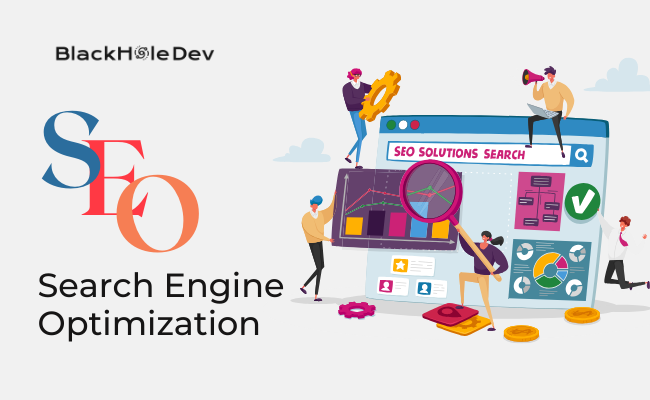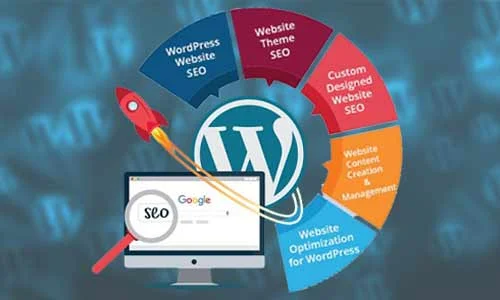Introduction
In today’s rapidly evolving digital landscape, having a strong online presence is paramount for businesses and individuals alike. With the ever-increasing competition and saturation of the online marketplace, standing out from the crowd has become more challenging than ever. Therefore, implementing effective strategies to enhance visibility and attract organic traffic is essential for success. Among these strategies, on-page SEO stands out as a cornerstone tactic. By optimizing various on-page elements, such as content, meta tags, and internal links, businesses can improve their search engine rankings and increase their chances of being discovered by potential customers. In this comprehensive guide, we’ll delve into the significance of on-page SEO and provide actionable techniques to empower you to optimize your website effectively. Whether you’re a seasoned marketer or a novice website owner, mastering on-page SEO is key to staying ahead in the digital race.
Understanding On-Page SEO
On-page SEO involves optimizing specific web pages to enhance their visibility in search engine results and increase organic traffic. Unlike off-page SEO, which focuses on external factors like backlinks, on-page SEO deals with optimizing elements directly on your website. These elements include content, meta tags, URLs, internal links, images, and more. By optimizing these elements, you can improve your website’s relevance and authority in the eyes of search engines like Google.
Keyword Research and Optimization
Thorough keyword research forms the cornerstone of every effective on-page SEO strategy.This entails pinpointing the specific terms and phrases that resonate with your target audience and are commonly used in search queries. By conducting thorough keyword research, you can uncover valuable insights into your audience’s search behavior and preferences. Once you’ve identified your target keywords, it’s essential to incorporate them naturally into your website’s titles, headings, and content. However, it’s crucial to avoid keyword stuffing, as this can negatively impact your site’s readability and user experience.
Content Optimization
High-quality, relevant content is key to engaging your audience and improving your search engine rankings. When optimizing your content for SEO, focus on creating valuable, informative content that aligns with the needs and interests of your target audience. Additionally, pay attention to meta tags, including meta titles and meta descriptions. These tags provide search engines with valuable information about your content, helping them understand what your page is about and improving its visibility in search results.
URL Structure and Navigation
The structure of your website’s URLs plays a significant role in both user experience and search engine optimization. Clear, descriptive URLs not only help users understand the content of your pages but also provide search engines with valuable context about your site. Additionally, optimizing your website’s navigation can enhance user experience and make it easier for search engine crawlers to index your pages. Ensure that your site’s navigation is intuitive, organized, and easy to navigate.
Internal Linking Strategies
Internal linking is a powerful SEO technique that can improve your website’s search engine rankings and enhance its overall structure. By strategically linking between related pages on your site, you can distribute link equity and help search engines understand the relationships between different pieces of content. When implementing internal links, focus on relevance and context, and avoid over-optimization or excessive linking, which can appear spammy and harm your site’s credibility.
Image Optimization
Images are an essential component of any website, but they can also impact your site’s SEO performance. When optimizing images for search engines, be sure to include descriptive alt tags, file names, and captions. These elements provide valuable context about your images and can help improve your site’s visibility in image search results. Additionally, consider optimizing your images for page speed by reducing file sizes and using responsive images that scale appropriately on different devices.
Mobile Optimization
With the increasing use of mobile devices, mobile optimization has become a critical aspect of on-page SEO.Make certain that your website is optimized for mobile devices and is responsive, ensuring smooth adaptation across a variety of screen sizes and platforms. Mobile-friendly design not only improves user experience but also signals to search engines that your site is optimized for modern browsing habits. Additionally, prioritize mobile-friendly content and avoid intrusive interstitials or pop-ups that can disrupt the user experience on mobile devices.
Page Speed Optimization
Page speed is a crucial ranking factor that can significantly impact your site’s search engine rankings and user experience. Slow-loading pages frustrate users and increase bounce rates, leading to lower search engine rankings. To improve your site’s page speed, consider optimizing images, minifying code, leveraging browser caching, and using content delivery networks (CDNs). By reducing page load times, you can enhance user experience and improve your site’s overall performance in search results.
Schema Markup
Schema markup is a form of structured data that provides search engines with additional information about your web pages. Through the integration of schema markup, you can elevate your website’s presence within search results while simultaneously boosting click-through rates. Common types of schema markup include product schema, recipe schema, event schema, and more. By adding schema markup to your website, you can provide search engines with valuable context about your content and increase the likelihood of appearing in rich snippets and other enhanced search features.
Monitoring and Continuous Improvement
On-page SEO demands continual monitoring, analysis, and refinement, emphasizing the need for ongoing attention and improvement. Use analytics tools like Google Analytics and Google Search Console to track your site’s performance, monitor keyword rankings, and identify areas for improvement. Pay attention to metrics like organic traffic, bounce rate, and conversion rate to gauge the effectiveness of your on-page SEO efforts. Additionally, regularly audit your website’s on-page elements to ensure they’re optimized for maximum visibility and relevance.
Conclusion
Harnessing the potential of on-page SEO is vital for enhancing your website’s visibility, drawing organic traffic, and ultimately accomplishing your online objectives. By employing the strategies delineated in this article, you can optimize your website’s on-page elements and elevate its search engine rankings. Keep in mind that on-page SEO is a continual endeavor that demands commitment, perseverance, and ongoing enhancement. By staying abreast of the latest trends and best practices in on-page SEO, you can ensure that your website remains competitive and pertinent in today’s digital landscape, particularly within the realm of IT services.





